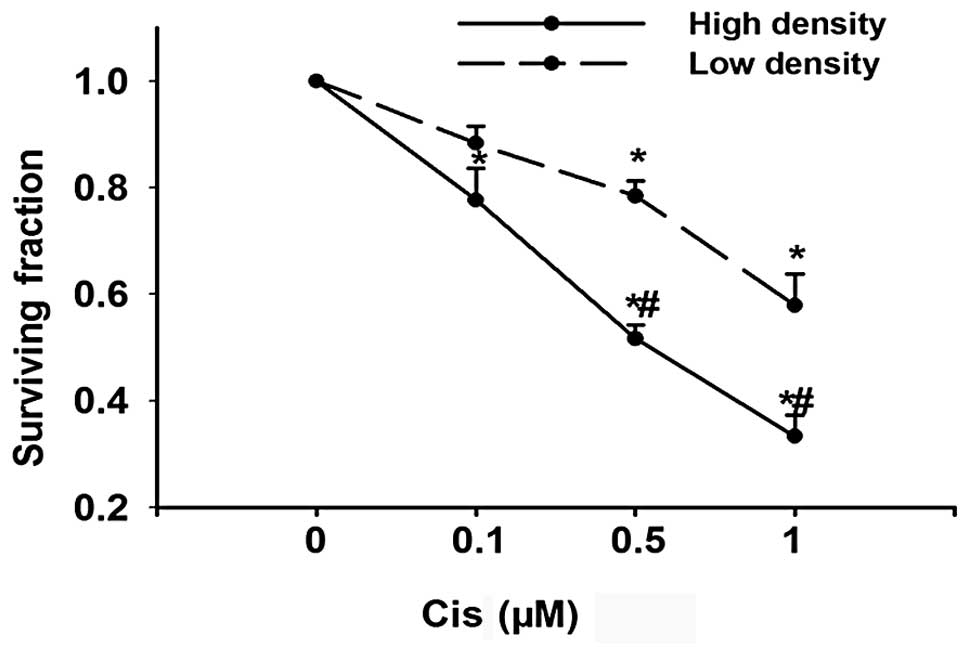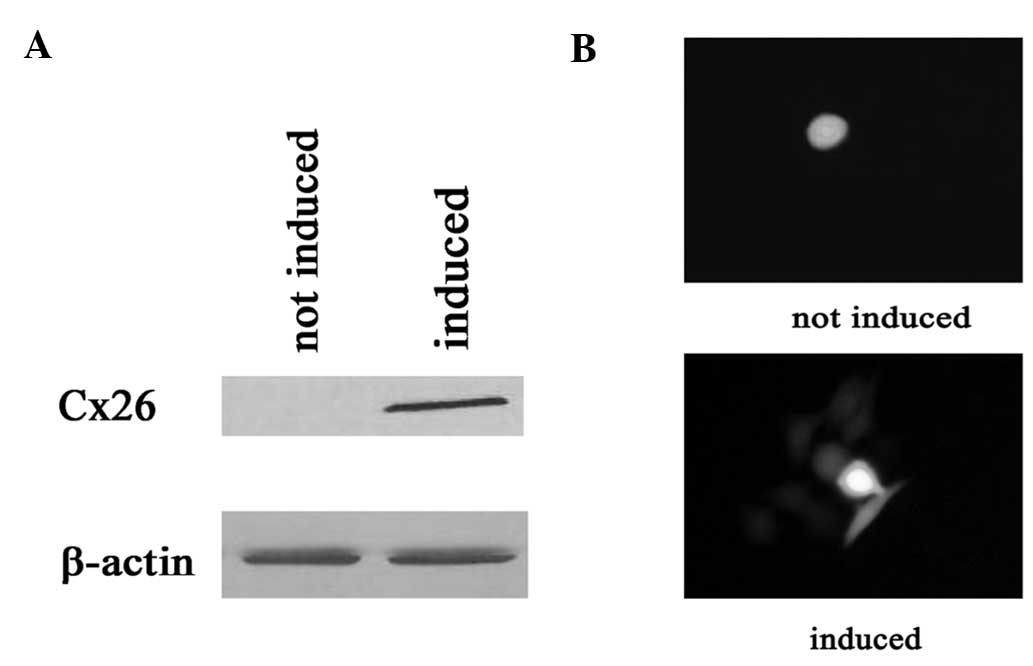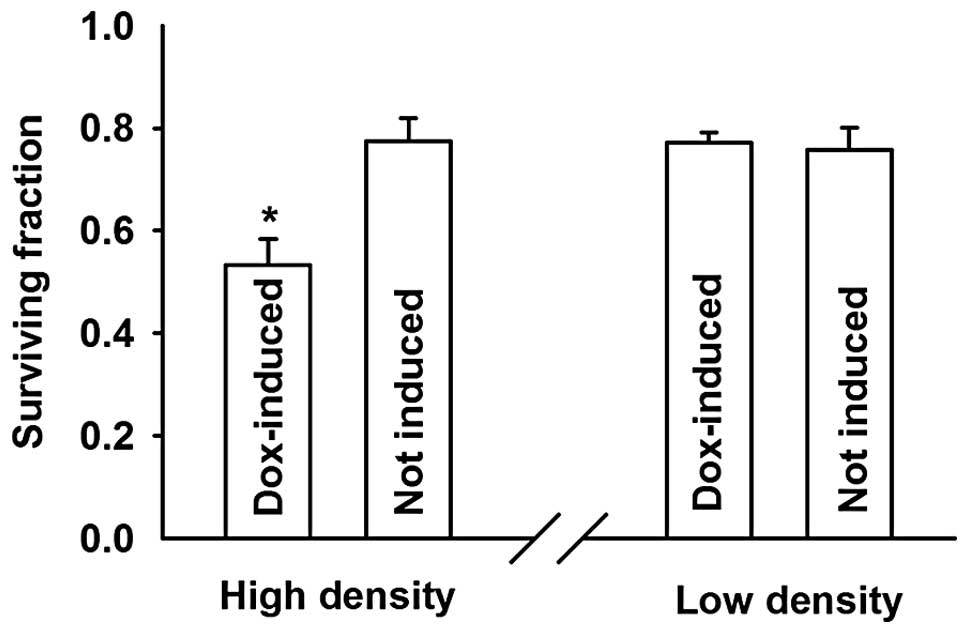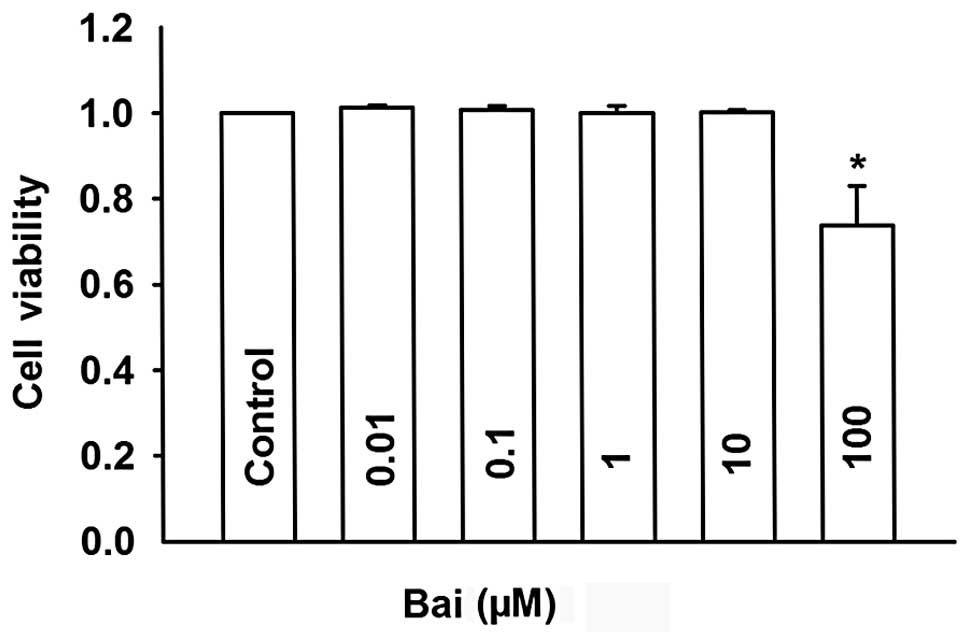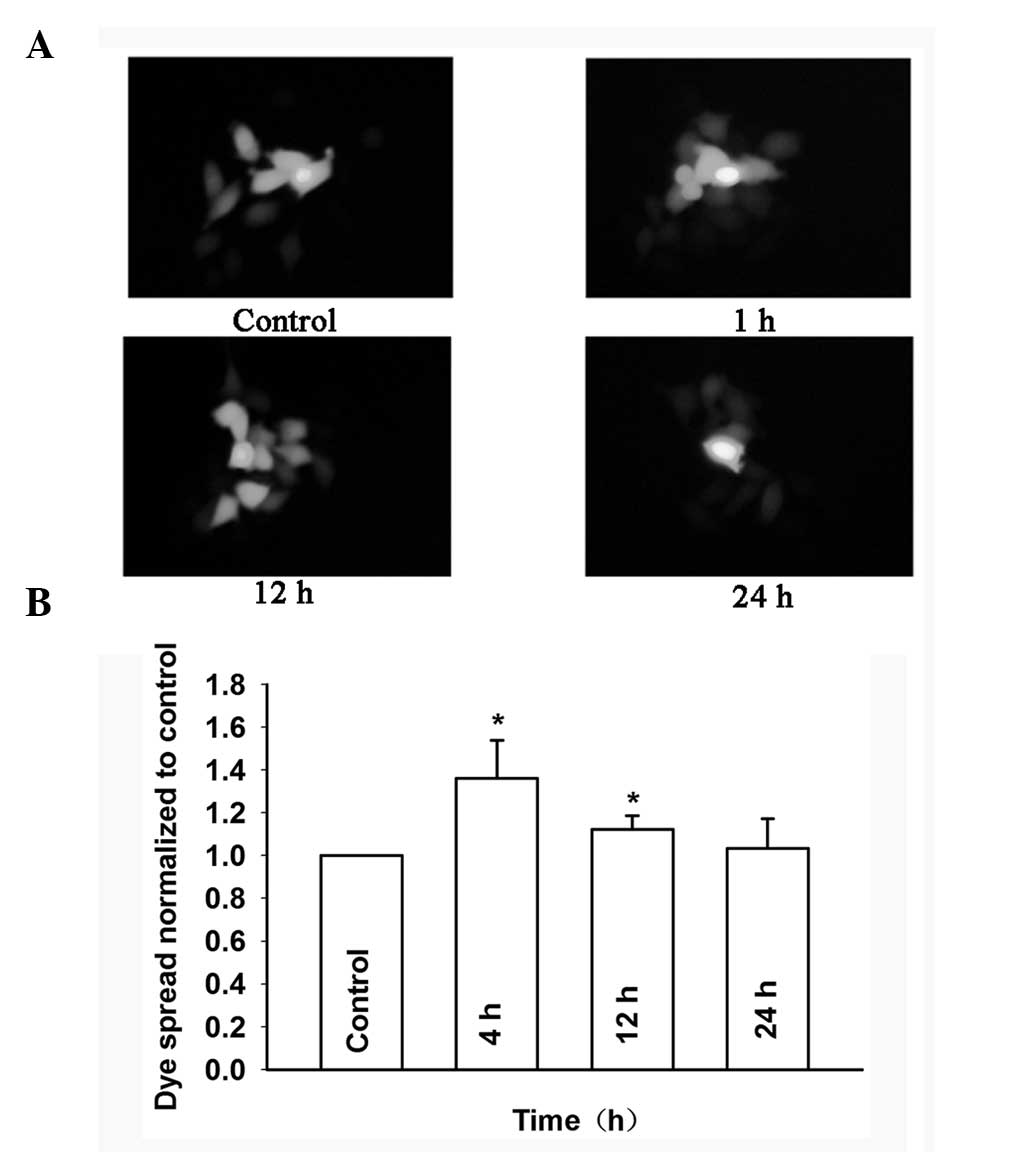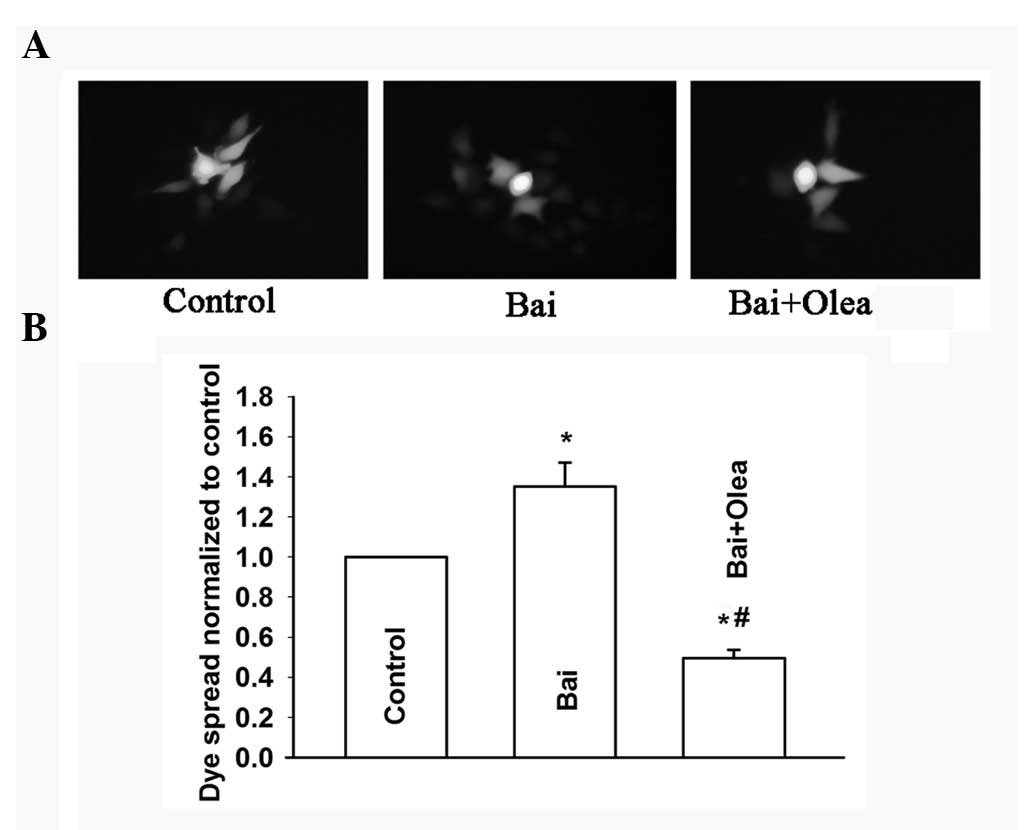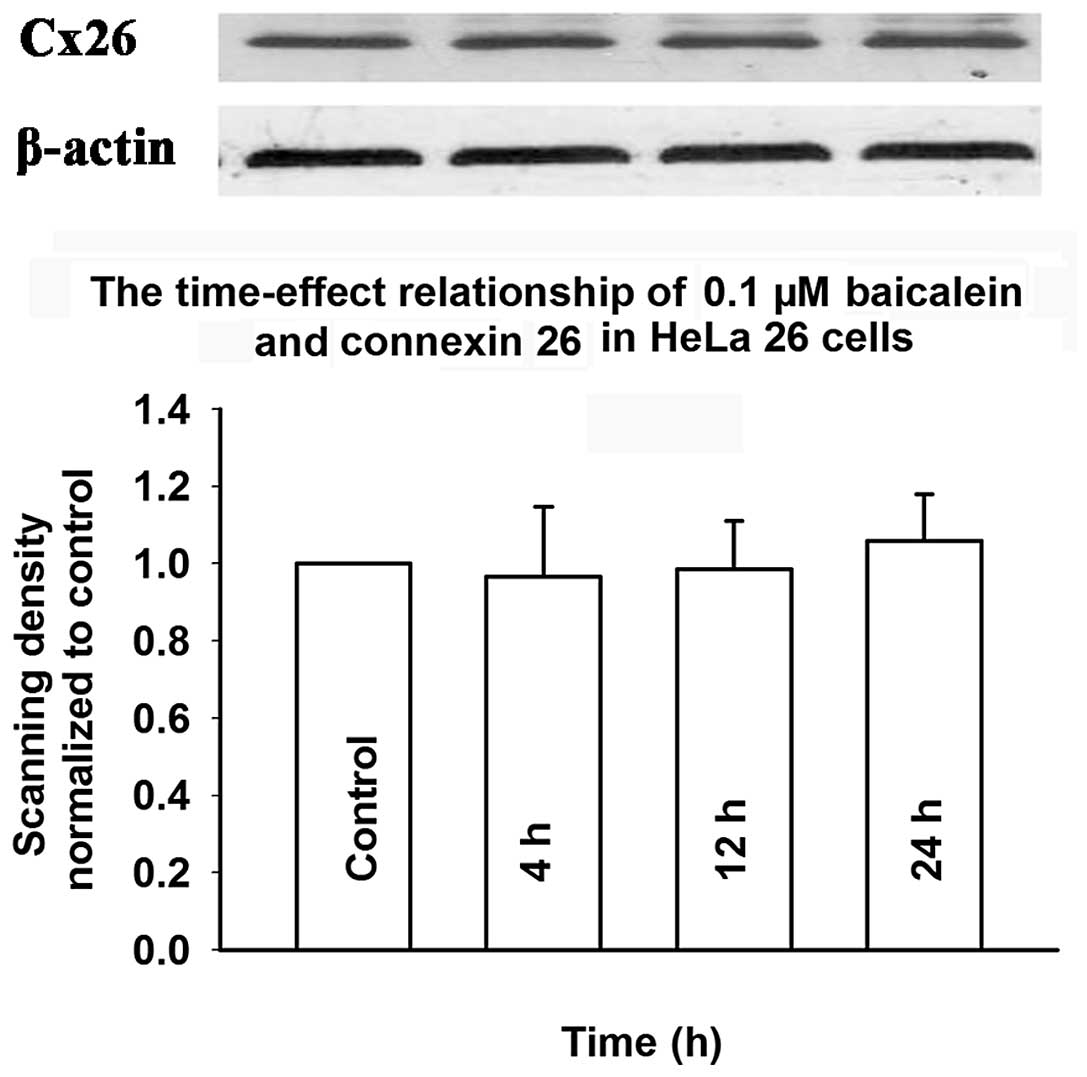|
1
|
Giaccone G: Clinical perspectives on
platinum resistance. Drugs. 59(Suppl 4): 9–17. 2000. View Article : Google Scholar
|
|
2
|
Fuertes MA, Alonso C and Pérez JM:
Biochemical modulation of cisplatin mechanisms of action:
enhancement of antitumor activity and circumvention of drug
resistance. Chem Rev. 103:645–662. 2003. View Article : Google Scholar : PubMed/NCBI
|
|
3
|
King TJ and Bertram JS: Connexins as
targets for cancer chemoprevention and chemotherapy. Biochim
Biophys Acta. 1719:146–160. 2005. View Article : Google Scholar : PubMed/NCBI
|
|
4
|
Kalvelyte A, Imbrasaite A, Bukauskiene A,
Verselis VK and Bukauskas FF: Connexins and apoptotic
transformation. Biochem Pharmacol. 66:1661–1672. 2003. View Article : Google Scholar : PubMed/NCBI
|
|
5
|
Jensen R and Glazer PM:
Cell-interdependent cisplatin killing by Ku/DNA-dependent protein
kinase signaling transduced through gap junctions. Proc Natl Acad
Sci USA. 101:6134–6139. 2004. View Article : Google Scholar : PubMed/NCBI
|
|
6
|
Wang Q, You T, Yuan D, Han X, Hong X, He
B, Wang L, Tong X, Tao L and Harris AL: Cisplatin and oxaliplatin
inhibit gap junctional communication by direct action and by
reduction of connexin expression, thereby counteracting cytotoxic
efficacy. J Pharmacol Exp Ther. 333:903–911. 2010. View Article : Google Scholar
|
|
7
|
Chaumontet C, Bex V, Gaillard-Sanchez I,
Seillan-Heberden C, Suschetet M and Martel P: Apigenin and
tangeretin enhance gap junctional intercellular communication in
rat liver epithelial cells. Carcinogenesis. 15:2325–2330. 1994.
View Article : Google Scholar : PubMed/NCBI
|
|
8
|
Conklin CM, Bechberger JF, MacFabe D,
Guthrie N, Kurowska EM and Naus CC: Genistein and quercetin
increase connexin43 and suppress growth of breast cancer cells.
Carcinogenesis. 28:93–100. 2007. View Article : Google Scholar : PubMed/NCBI
|
|
9
|
Wang L, Ling Y, Chen Y, Li CL, Feng F, You
QD, Lu N and Guo QL: Flavonoid baicalein suppresses adhesion,
migration and invasion of MDA-MB-231 human breast cancer cells.
Cancer Lett. 297:42–48. 2010. View Article : Google Scholar : PubMed/NCBI
|
|
10
|
Cheng YH, Li LA, Lin P, Cheng LC, Hung CH,
Chang NW and Lin C: Baicalein induces G1 arrest in oral cancer
cells by enhancing the degradation of cyclin D1 and activating AhR
to decrease Rb phosphorylation. Toxicol Appl Pharmacol.
263:360–367. 2012. View Article : Google Scholar : PubMed/NCBI
|
|
11
|
Takahashi H, Chen MC, Pham H, Angst E,
King JC, Park J, Brovman EY, Ishiguro H, Harris DM, Reber HA, Hines
OJ, Gukovskaya AS, Go VL and Eibl G: Baicalein, a component of
Scutellaria baicalensis, induces apoptosis by Mcl-1
down-regulation in human pancreatic cancer cells. Biochim Biophys
Acta. 1813:1465–1474. 2011.
|
|
12
|
Chen CH, Huang TS, Wong CH, Hong CL, Tsai
YH, Liang CC, Lu FJ and Chang WH: Synergistic anti-cancer effect of
baicalein and silymarin on human hepatoma HepG2 cells. Food Chem
Toxicol. 47:638–644. 2009. View Article : Google Scholar : PubMed/NCBI
|
|
13
|
Zhang Y, Song L, Cai L, Wei R, Hu H and
Jin W: Effects of baicalein on apoptosis, cell cycle arrest,
migration and invasion of osteosarcoma cells. Food Chem Toxicol.
53:325–333. 2013. View Article : Google Scholar : PubMed/NCBI
|
|
14
|
Koreen IV, Elsayed WA, Liu YJ and Harris
AL: Tetracycline-regulated expression enables purification and
functional analysis of recombinant connexin channels from mammalian
cells. Biochem J. 383:111–119. 2004. View Article : Google Scholar
|
|
15
|
Papazisis KT, Geromichalos GD, Dimitriadis
KA and Kortsaris AH: Optimization of the sulforhodamine B
colorimetric assay. J Immunol Methods. 208:151–158. 1997.
View Article : Google Scholar : PubMed/NCBI
|
|
16
|
Goldberg GS, Bechberger JF and Naus CC: A
pre-loading method of evaluating gap junctional communication by
fluorescent dye transfer. Biotechniques. 18:490–497.
1995.PubMed/NCBI
|
|
17
|
Erdlenbruch B, Nier M, Kern W, Hiddemann
W, Pekrun A and Lakomek M: Pharmacokinetics of cisplatin and
relation to nephrotoxicity in paediatric patients. Eur J Clin
Pharmacol. 57:393–402. 2001. View Article : Google Scholar : PubMed/NCBI
|
|
18
|
Guan X, Cravatt BF, Ehring GR, Hall JE,
Boger DL, Lerner RA and Gilula NB: The sleep-inducing lipid
oleamide deconvolutes gap junction communication and calcium wave
transmission in glial cells. J Cell Biol. 139:1785–1792. 1997.
View Article : Google Scholar : PubMed/NCBI
|
|
19
|
Krysko DV, Leybaert L, Vandenabeele P and
D’Herde K: Gap junctions and the propagation of cell survival and
cell death signals. Apoptosis. 10:459–469. 2005. View Article : Google Scholar : PubMed/NCBI
|
|
20
|
Mesnil M, Piccoli C and Yamasaki H: A
tumor suppressor gene, Cx26, also mediates the bystander effect in
HeLa cells. Cancer Res. 57:2929–2932. 1997.PubMed/NCBI
|
|
21
|
Tanaka M, Fraizer GC, De La Cerda J,
Cristiano RJ, Liebert M and Grossman HB: Connexin 26 enhances the
bystander effect in HSVtk/GCV gene therapy for human bladder cancer
by adenovirus/PLL/DNA gene delivery. Gene Ther. 8:139–148. 2001.
View Article : Google Scholar : PubMed/NCBI
|
|
22
|
Garcia-Rodríguez L, Pérez-Torras S, Carrió
M, Cascante A, García-Ribas I, Mazo A and Fillat C: Connexin-26 is
a key factor mediating gemcitabine bystander effect. Mol Cancer
Ther. 10:505–517. 2011.PubMed/NCBI
|
|
23
|
Li DR, Zhang W, Tang DP, Tu WS and Qin J:
A study of the reverse effect of scutellarein on
multidrug-resistant human ovarian carcinoma cell line A2780/ADM.
Tumor. 24:111–113. 2004.
|
|
24
|
Lampe PD and Lau AF: The effects of
connexin phosphorylation on gap junctional communication. Int J
Biochem Cell Biol. 36:1171–1186. 2004. View Article : Google Scholar : PubMed/NCBI
|
|
25
|
Warn-Cramer BJ and Lau AF: Regulation of
gap junctions by tyrosine protein kinases. Biochim Biophys Acta.
1662:81–95. 2004. View Article : Google Scholar : PubMed/NCBI
|
|
26
|
Traub O, Look J, Dermietzel R, Brümmer F,
Hülser D and Willecke K: Comparative characterization of the 21-kD
and 26-kD gap junction proteins in murine liver and cultured
hepatocytes. J Cell Biol. 108:1039–1051. 1989. View Article : Google Scholar : PubMed/NCBI
|
|
27
|
Sáez JC, Nairn AC, Czernik AJ, Spray DC,
Hertzberg EL, Greengard P and Bennett MV: Phosphorylation of
connexin 32, a hepatocyte gap-junction protein, by cAMP-dependent
protein kinase, protein kinase C and
Ca2+/calmodulin-dependent protein kinase II. Eur J
Biochem. 192:263–273. 1990.PubMed/NCBI
|
|
28
|
Chaumontet C, Droumaguet C, Bex V,
Heberden C, Gaillard-Sanchez I and Martel P: Flavonoids (apigenin,
tangeretin) counteract tumor promoter-induced inhibition of
intercellular communication of rat liver epithelial cells. Cancer
Lett. 114:207–210. 1997. View Article : Google Scholar
|
|
29
|
Huard C, Druesne N, Guyonnet D, Thomas M,
Pagniez A, Le Bon AM, Martel P and Chaumontet C: Diallyl disulfide
(DADS) enhances gap-junctional intercellular communication by both
direct and indirect mechanisms in rat liver cells. Carcinogenesis.
25:91–98. 2004. View Article : Google Scholar : PubMed/NCBI
|



